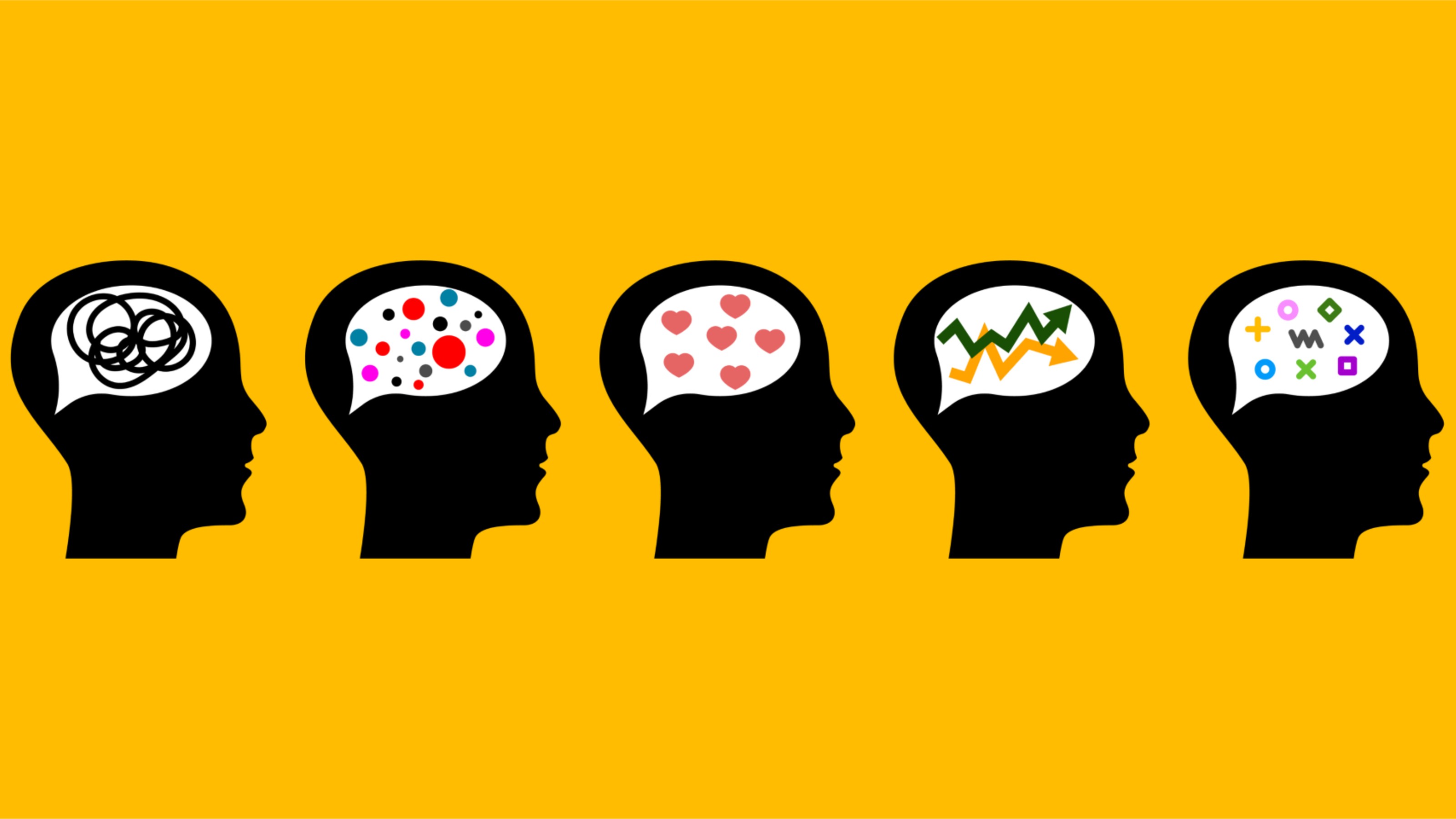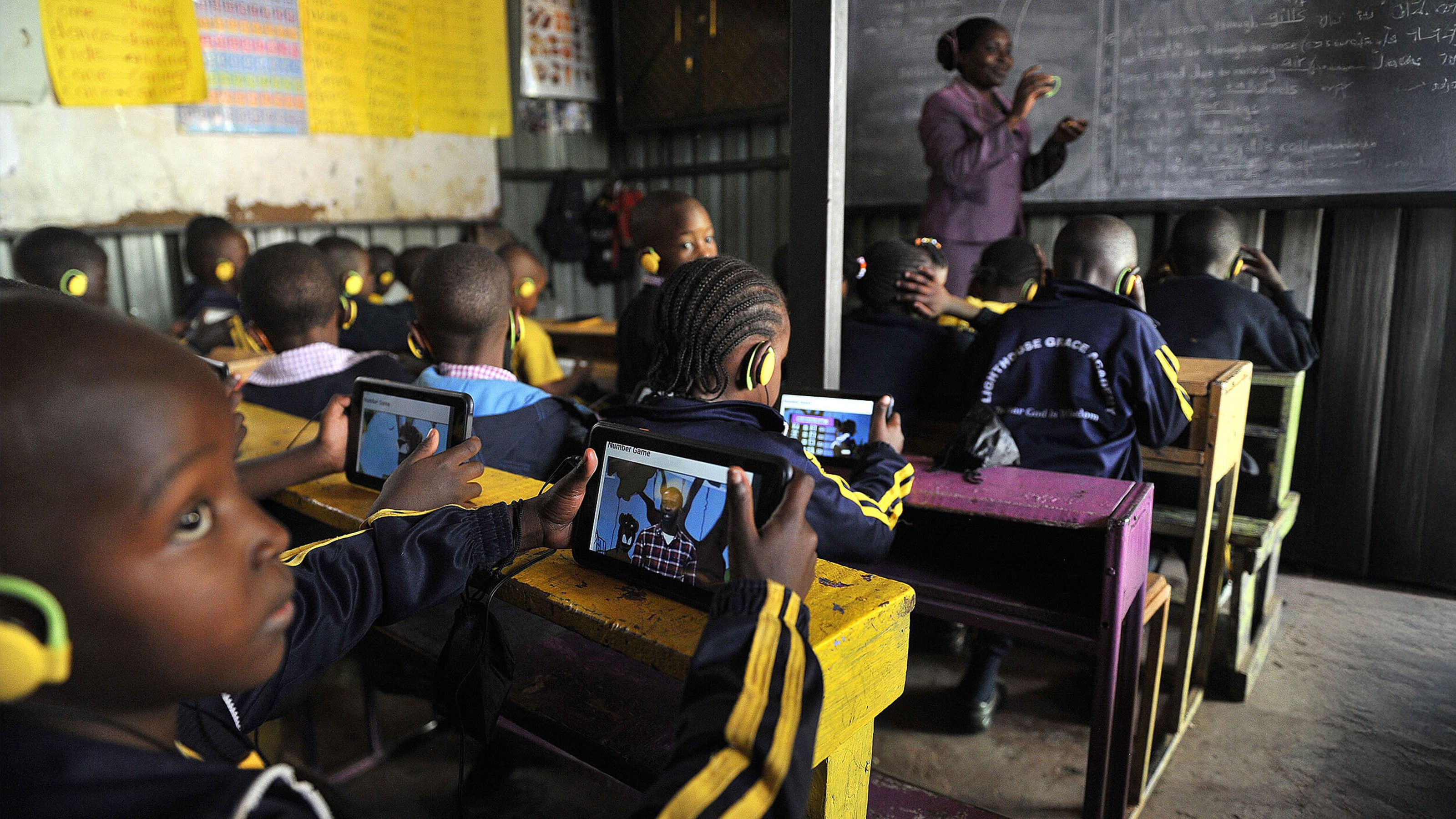A conversation with the attorney and founder of the Innocence Project.
Question: What inspired you to start challenging wrongful convictions?
Barry Scheck: I’ve been a law professor for 31 years at the Benjamin Cardozo School of Law here in New York City, and when DNA testing began to get transferred from medial and research uses to the forensic arena, my colleague Peter Neufeld and I became very conversant with it in 1988, 1989. In fact, we tried to get somebody out of prison who’d been convicted in the Bronx represented by the Public Defender’s Office where we used to work, and we tried to do DNA testing before it was even in the courts to prove that he was innocent. He had been convicted of a rape and there were 17 alibi witnesses that he had at a prayer meeting. But there were three eye witnesses, so he was convicted notwithstanding what appeared to be strong proof of his innocence. And we tried to do DNA testing with a new private company named, Life Codes, but we couldn’t get any results and instead we were able to prove him innocent with other kinds of evidence.
But at that time, everybody recognized that DNA was going to be very important, and Governor Mario Cuomo, in his last – one of his last acts in his administration, set up a commission to look at DNA testing and how it might effect the criminal justice system. Now, we’re talking 1988, 1989. And Peter and I were on that commission and we met a number of scientists, particular Dr. Yon Winkowski from Cold Spring Harbor, and he in turn introduced us to a number of scientists, in particular, Dr. Erick Lander, who was then part of the Whitehead Institute, MIT and Harvard and now is one of President Obama’s science advisors one of two or three science advisors. And he is at the Broad Institute. He was both a geneticist and a mathematician and a very brilliant guy. And so he taught us a lot, not just about molecular biology, but also about how science works, technology transfers, and the interplay between scientific institutions – science and governmental institutions. And it was sort of left to us to figure how this was to work in the court system.
So, from the very beginning of learning about this technology, the truth is, we knew it would be transformative, we knew that it would have an enormous impact, not just in exonerating people who were wrongfully convicted, but apprehending people who had really committed the crimes, and just a learning moment so that we could figure out what causes wrongful convictions and how to prevent them.
Question: How does the Innocence Project decide which cases to take up?
Barry Scheck: we do get hundreds of letters per week. And we have still a cue – a waiting list of a few thousand people. But our criteria is very simple. For our project, the point is, if a DNA test could in and of itself prove you innocent. And the way things work now, more than one DNA test. Because when this technology was first transferred to the forensic arena, we were doing what they were known as Restriction Fragment Length Polymorphism tests. People would know those as “The Bands,” right. And that was looking at nuclear DNA. That would be a cell that has a nucleus and you would extract the DNA from the nucleus of the cell.
Now, we have techniques using what’s known as **** Chain Reaction and this is – or PCR, and the best way to think about this, it’s molecular Xeroxing. You can take a very, very small amount of starting material and amplify it up and you can look not just a nuclear DNA and the technique that’s now known is Short Tandem Repeat. So there is using these so-called STRs or Tandem repeats, there is now a set of markers that are used for the database here in the United States, and they are also used in the United Kingdom and all over the world, frankly. So we have one – developing one huge DNA database just based on this one particular Short Tandem Repeat system.
But now we can also do what’s known as “Y” DNA testing, which is just looking at DNA from the Y chromosome, and you can amplify that up with a PCR. And then there’s another technique called Mitochondrial DNA testing.
Mitochondrial DNA is a DNA test that literally looks at the mitochondrial within a cell. It’s sort of the powerhouse of the cell. And that’s maternally inherited. So your mitochondrial DNA is the same as your mom’s and your brothers and sisters, unless something really weird is going on in your family.
So, many, many different kinds of DNA tests have developed since we first came into business about 15 years ago, and that has enhanced our capability of answering the simple question that you asked me is, how do we decide to take a case? And the simple answer is, well if DNA can prove you innocent. But now we can do lots of different DNA tests and the methods of extraction have gotten much better, so it’s a misnomer. People talk about touch DNA. That’s really not helpful, but what is really meant there is that you can extract DNA from epithelial or skins cells, for example, that might be found on a piece of clothing or if the assailant left a sneaker or any kind of – a woolen hat or something where you might find saliva or skin cells or any piece of clothing, you can now take cuttings from various different parts of that clothing and develop a DNA profile of the “usual wearer.”
So all of these different techniques, when combined together, I mean you get redundancy of results, can greatly assist in demonstrating that somebody didn’t commit the crime even when you’re looking at cases that are 10, 15, 20 or 30 years old.
Question: How many wrongful convictions have been overturned as a result of the Innocence Project's work?
Barry Scheck: That’s 258 cases I believe as we are sitting here today of post-conviction DNA exonerations. But there are many other cases involving people who were actually sentenced to death in this country, and you can find those on the Death Penalty Information Center website, where there’s substantial proof that innocent people were convicted, but they’ve been exonerated with evidence other than DNA. So, what happened since the Innocence Project really went into business in 1992 is really a movement, a civil rights movement, an innocence movement that is really transformed the way that the criminal justice system looks at error and looks at the interrelationship of science and results. And the one thing we know, because of post-conviction DNA tests is that there are far more innocent people than anybody ever really believed.
Question: What percentage of the cases that you take turn out to have been wrongful convictions?
Barry Scheck: Well, we can give you – and we have posted a pretty precise set of statistics on the number of cases that we take where DNA could prove that somebody’s innocent. It varies because, you know, in most cases – well in many cases, we can’t find the evidence, it’s been lost or destroyed. Remember, we are looking at cases that are 20 or 30 years old. It goes in cycles. In the last few years, about half the time, when somebody writes to us and says, DNA is going to prove me innocent, then we get the case to the lab, meaning we find the evidence, and then we get the test results, about half the time, you know, we can demonstrate their innocence with the DNA test. Sometimes we get no results and sometimes, they’re guilty.
Question: Are some kinds of cases or defendants more likely to result in wrongful convictions?
Barry Scheck: Well, this is a very good question because when Peter Neufeld and I started in this business, you know, we’d been criminal defense lawyers and worked on all kinds of criminal cases. I’ve been a professor, you know, I’ve been doing this for 31 years and training a lot of prosecuters and stayed in the Federal Courts, so I thought I was pretty experienced when it came to looking at cases. And you know, very often I will look at one and I’ll say, “Ah, based on what we know about the **** of wrongful conviction, this sure looks like a bad eye witness identification case.” Or there’s all kinds of evidence here that indicates to me that – I’ll bet this one is going to come out innocent. Right? Did an exculpatory DNA result. And then there’s other ones where I’ll say, “Well, you know, we’re taking this case because in theory, the DNA could prove this individual innocent, but boy they look really guilty to me. I mean, look at all this other corroborating evidence and there’s fingerprint here and there’s all kinds of other evidence.” And were wrong. And that’s the most important thing to know.
We who work within the criminal justice system where the life and liberty of the people are at stake have to have some humility. That’s really what these DNA exonerations are teaching us.
My prosecutor friends and judges will tell you that there are a whole host of cases among these 258 where nobody ever believed that the individual was innocent. But then after the DNA exonerates them and we go back and we deconstruct the case, we find there were all kinds of people who were lying or it turns out that certain forensic techniques that we thought were highly reliable, are not. And things weren’t what they appeared to be.
So I think it’s a really important take home lesson that you have to be humble about these things and that, you know, we really don’t know as much as we think we do about results in the criminal justice system for sure.
Question: Why would anyone—even prosecutors—object to the widespread use of DNA evidence in all cases?
Barry Scheck: Well this has changed over time. At first when we began our work at the Innocence Project, and there’s a problem within the system generally, there were all kinds of what we call “procedural bars.” To getting a post-conviction DNA test, much less being able to offer the results in court. In fact, there were no states that permitted post-conviction DNA testing and there were only nine states that said that you could raise a claim of newly discovered evidence to show that you were innocent at any time. So many states had time limits, statutes of limitations.
In Virginia, there was an infamous 21-day rule. Twenty-one days after the trial, even if you’d found new evidence of innocence you could put it into court as newly discovered. In other states is was one year or two years or three years or six months. I mean, there were all kinds of problems like this. So we were able to get passed now in 48 states, statutes that allow for post-conviction DNA testing. And Massachusetts is one of the states that doesn’t have a statute, but you can, based on what they call common law, you can usually get a test result, but they should pass the statute.
So the point here is that from the very beginning, there were all kinds of impediments to even getting this evidence into court. And at first when we went into court and we said to the prosecutors, “Oh, well look at this case. There’s an obvious basis to doing a DNA test and it could prove somebody innocent and maybe identify the real perpetrator, why don’t you consent to it?” And in many instances they would. In many instances they did not. Not for particularly rational reasons, I must tell you. Which is really, I guess the subject of your question, why would anybody resist this? Right? And then even after the DNA proof came in, why would prosecutors still say, “Oh no, no, we’re going to uphold the conviction.” And that is a question for cognitive psychology. And a lot of people thought about it. I think there are a number of factors. The first is very simply, it’s human nature. People don’t like to admit they’re wrong. We’re all like that. Number two, and maybe well I don’t want to give Primacy to any of these, they’re all worked together. There’s the problem that when somebody’s convicted, there’s a victim, or a victim’s family in the case of a homicide. And the prosecutor has said, “Well, this defendant is a horrible person, a beast, an animal in some instances they would say, “kill this person, committed this most heinous of crimes.” And now you have to go back to the victim’s family and say, “Guess what. We were wrong.”
Well that’s very difficult for a victim or a family and we see it so often in the sexual assault cases. In particular, there was an eye witness misidentification so hard for somebody that’s been subject to such a brutal crime to now – who made an honest mistake in making a misidentification to now say, “Oh my God, I was wrong.” I mean you feel doubly, triply violated. It’s a horrible burden to carry.
So there’s a lot of reluctance to upset victims within a community. So that’s a second factor that inhibits prosecutors sometimes and police from acknowledging a wrongful conviction or even opposing an effort to get a DNA test.
And then finally, and this may be more subtle, but I think it’s a very, very important factor because in a lot of cases we would find the prosecutor, who was standing in the way of the DNA testing and refusing to acknowledge the obvious implications of the new evidence, wasn’t even in office when the crime was committed. And the reason, I think, that some of these prosecutors were so reluctant to go along with what was I think a clearly just outcome or even to find out the truth or get better scientific evidence that would shed light on the truth, is that they’re afraid of the next case.
So if we have an exoneration in an eye witness identification case and now I’m trying a new case in front of the jury, the jury had just heard about this big exoneration and they’re always big news. They should be too. And they’re going to be thinking; maybe I shouldn’t trust this eye witness. Or maybe that case involved police misconduct, maybe I shouldn’t trust the police. Or it was a false confession; maybe I shouldn’t be so sure that a confession means that somebody is really guilty. And on it goes. So I think that they’re worried about the next case.
The truth is that if you are a prosecutor that has the reputation for going back and looking back at old cases and correcting errors, I think that you’re reputation for reliability goes up.
Question: Are there factors that make a jurisdiction more likely to wrongfully convict someone?
Barry Scheck: Any jurisdiction where there is not adequate funding for criminal defense lawyers is a jurisdiction at risk, and that is so many in this country. It’s a longstanding and continuing crisis that we do not adequately fund public defenders or court appointed lawyers because nothing guarantees the conviction of an innocent person more than a lawyer that is not adequately funded or not competent to do the job. You know it is an adversary system and we really do depend upon a vigorous criminal defense function in order to make sure that everything is being done right within the system because if police or prosecutors cross the line in their prosecution of somebody even that is guilty or if the forensic laboratories for example are not examined in every case so that we make sure that they’re doing their jobs correctly you know the whole system will implode on itself and we’re seeing that everywhere. I can rip any headline, so take a look at North Carolina. North Carolina recently there was an exoneration where it was demonstrated that one of the people within the state crime lab had done a presumptive test for the existence of blood. It came out positive and then there is a follow up test you’re supposed to do to see if that really is blood and the follow up test was negative, but the lab only reported the first presumptive test that was positive and that was a regular procedure, so now they have just finished an audit of old cases where that was going on at the SBI and it has created a huge crisis within the North Carolina Criminal Justice System and there is yet more to do looking at other disciplines within the crime lab to see whether we were just getting a reliable result.
The Houston Police Department Crime Lab had an extremely famous scandal where Mike Bromwich who actually had done an analysis of the FBI lab when he was the inspector general in the Reno Justice Department, he did a huge reexamination of the Houston Police Department Crime Lab and literally found that they were not doing a proper job in their serology section in virtually all the cases and this led to not just wrongful convictions, but real assailants getting away with it. I mean they weren’t even… They would find stains, semen, saliva and blood stains that were probative and they wouldn’t even do the tests. It was a gigantic scandal and the same thing has happened in West Virginia years ago with a fellow named Fred Zane where they demonstrated that he was quote, unquote dry-labbing. That is he wasn’t even doing the tests, but he would come in and give results you know so you ask yourself well obviously that is a bad forensic laboratory, but where were the criminal defense lawyers? Why weren’t they challenging any of this and finding out that they weren’t even doing the tests? Same thing happened in Montana. Same thing happened in Oklahoma City with a woman named Joyce Skillkristen [ph]. These all led to wrongful convictions, some in capital cases. A huge problem and so what we’ve found now is that the forensic science community has recognized that this is a very serious issue and we have to have real quality assurance there and there are other problems that I’m sure we’ll talk about concerning the reliability of these forensic tests, but your question you know to me is well what jurisdictions have more wrongful convictions than others. It’s really hard to know. You know tell me about the quality of their criminal defense bar. Tell me the quality of their crime laboratories. Tell me about the quality of their police forces and prosecutors and you know then we have an answer, so the truth is it can happen anywhere and anybody who thinks otherwise is only kidding themselves.
Question: How reliable is eyewitness testimony?
Barry Scheck: Eyewitness testimony of course is the single greatest cause of the conviction of the innocent and what is fascinating about that is that we have now 30 years, more than 30 years of fantastic research from experimental psychologists who have you know recreated crime scene… recreated events and played around with which different way we do a photo array or a lineup and different techniques that are used correlate more with accurate and reliable identifications in which techniques lead to errors and a number of reforms have been adopted by federal commissions and the American Bar Association, the International Association of Police, lots of policing entities based on really good scientific research. I mean a lot of this research is meta analysis. That is where you pull together lots of different studies and you have a lot of confidence that certain things are real affects and I’ll give you some examples that may surprise people.
For example, before you show somebody a photo array or a live lineup you should tell the witness, “We’re now going to show you some pictures or people.” “Please keep in mind that the real perpetrator may or may not be in this photo array or lineup and if you don’t make an identification don’t worry, the investigation will continue.” Just giving that warning dramatically reduces incorrect identifications without really reducing correct identifications and that is of extraordinary importance obviously in terms of being able to go out, find the real perpetrator and not arrest the wrong person. There is lots of reasons we think that this warning will reduce error. Certainly it inhibits people from guessing and there kind of a natural inclination to do that. Another reform that is of really critical importance is that the person that administers the lineup or the photo array should be double blinded. That is to say that the person should not know who the suspect is and that is important for many reasons, not the least of which is the possibility of feedback, confirming feedback.
What again meta analysis have shown is that if you say to somebody, “You picked out number two, good.” Or give some kind of confirming feedback whether you’re a law enforcement person or somebody else frankly what this does is it can falsely inflate the person’s certainty that they made the correct identification, the witnesses’ belief that they had a good opportunity to observe, the witnesses’ belief that they were paying attention when the crime was committed. All of these factors by the way, certainty, opportunity to observe, paying attention are all factors that the courts used to be using or use frankly in trying to weigh the reliability of identification when we know that let’s say some suggestive procedure has been used, so confirming feedback or even just the use of an unduly suggestive procedure can falsely inflate these so called reliability factors, certain, opportunity to observe, attention paid and the legal tests are out of whack with what the scientific evidence shows.
Question: How accurate are forensic tests that do not use DNA?
Barry Scheck: More than a year ago now the National Academy of Science came out with a report about forensic science generally, an extremely important report, a landmark report that anybody really interested in this field should look at and this report basically said look, DNA testing is the only validated forensic discipline we have and in particular when you look at pattern evidence and by this they were talking about fingerprints and tire tracks and looking at striations on bullets and trying to determine whether they came from a gun, particular gun or not, all these pattern disciplines had not be adequately validated because you would have experts coming into court and they’d say, “I’m looking at the striations of this bullet that we recovered from the crime scene and now I found this defendant’s gun and I fired a bullet from that and I’m looking at the two of them under a microscope and I see all these lines and I think there is quote, unquote, sufficient agreement.” And by that and if I’m really a big quality assurance lab I’ll bring my buddy in and he’ll look at the microscope and he’ll say, “I think there is also agreement here and from this I can now tell you that this bullet came from that gun to the exclusion of all other guns in the universe.” Well think about it. Scientifically on what basis? Do you have a database? Can you tell us anything about the frequency of finding similar patterns if indeed you have similar patterns? Do you have measurement area here? Can you give us a number? You know with DNA testing we can give you a number. We can give you the frequency of a particular DNA profile in various different populations. Can you give us a statistic? And the answer if no, they weren’t giving statistics and as a matter of fact they were just saying it’s unique. This bullet comes from that gun to the exclusion of all guns in the universe. This is nonsense and the National Academy of Science said so and said you guys have really got to go back to the drawing board and do some basic research to find out what the answers are to that question. Even fingerprints, which we know if you take all 10 prints and you scan it in and you put it into the database of known fingerprints you can do a pretty good job of identifying somebody, but that is not the question when you’re talking about a small latent print at a crime scene. You get a partial thumbprint let’s say and every time you lay down a print it’s always a little bit uneven and then you compare it to somebody else’s thumbprint. Can you say that this small latent uniquely comes from that individual? Well that is the way the testimony was going in for years and it was without scientific basis to say that it uniquely was this person’s print. You can’t say that.
Question: What do you think are the biggest flaws in the American judicial system?
Barry Scheck: Well there are a lot of flaws in the judicial system. I think we could probably do without elections of judges. That creates problems. I think that we could do a lot more to educate the judiciary in terms of scientific evidence. We have a real problem there. It’s increasingly you know scientific evidence is becoming important in a whole host of cases, not just criminal cases and it’s important that we have a certain level of scientific literacy in the judiciary, much less among lawyers. So I think those are two problems. You know it’s like in all of our politics money can make a real difference in corrupting the process of judicial elections. We’ve… John Grisham has written a wonderful book about this called The Appeal. It’s very quick reading, but it’s very troubling. There have been a number of judicial elections for highest appellate courts in this country where moneyed interests have been able to basically go after certain judges. They’re really interested in their you know corporate cases or maybe some tort reform case, but they’re able to make some kind of ruling in a criminal case or something else, look very scary to the electorate and they all of the sudden outside money comes into a state in an enormous amount and some campaign is run and judges are defeated. It happened to a fabulous judge in Wisconsin. It’s happened all across the country and the most famous instance is one that the United States Supreme Court looked into in West Virginia involving the Massey Coal Company and that was the coal company where we had that terrible accident in the mines recently where the head of that coal company put an enormous amount of money into the judicial election for the West Virginia Supreme Court and then the judge who was the beneficiary of this you know sat on the case and the United States Supreme Court that actually ruled in this case that had an appearance of impropriety. We know it when we see it and reversed the decision in that case, so that’s a… They remanded it for reconsideration. That’s a very, very, extreme example, but unfortunately I think a lot of that is going around the country and that… I know that Sandra Day O’Connor for example feels very, very strongly about judicial elections being a real problem and there is probably a lot of different kinds of merit systems that should be considered across the country.





